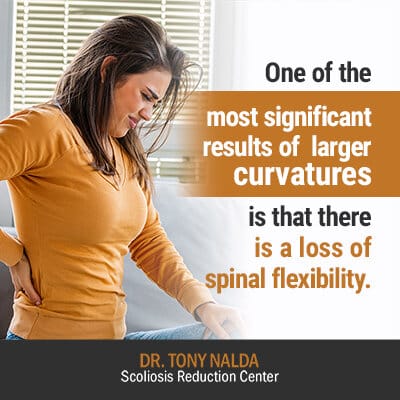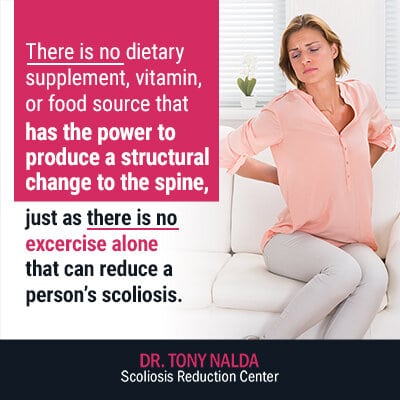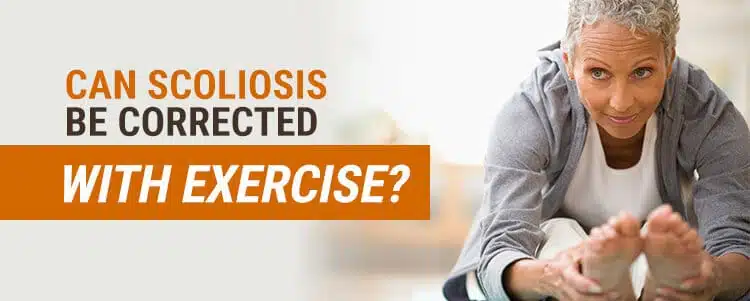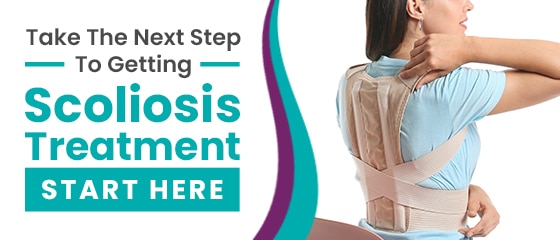For those wondering if scoliosis can be corrected with exercise, there are two important elements to the answer. The first is that as a progressive condition, scoliosis is incurable and can never be fully ‘corrected’. The next is that no exercise alone can reduce scoliosis; however, when part of a proactive treatment plan, exercises that are scoliosis-specific and customized to the patient’s condition, can play a role in reducing a curvature.
‘Exercise’ is a general term that describes moving the body in a number of ways. When it comes to using exercise to improve a medical condition, the exercise has to address the specific condition and be customized to the individual patient. When it comes to scoliosis, it’s a complex condition that can take a variety of forms, so let’s first talk about the scoliosis severity scale.
Scoliosis Severity and Spinal Flexibility
Scoliosis is a spinal deformity that cannot be cured, but its progression and severity can be managed with an effective treatment plan.

The main condition characteristic that determines its severity is the size of the abnormal spinal curvature. Generally speaking, the bigger the curve, the more severe the condition is and the more work it takes to reduce it. That’s not to say a curvature can’t be reduced, just that the treatment plan will have to be more intense and likely include a little more mobility work at the beginning.
One of the most significant results of larger curvatures is that there is a loss of spinal flexibility. As scoliosis progresses and the curvature gets larger, the spine tends to become more rigid.
As a spine gets more rigid, this means it becomes more difficult to manipulate, and when we are treating scoliosis, that’s exactly what we want to do; we want to get the spine to move in the direction that will improve the spine’s misalignment. We want to reduce the curvature as much as possible to restore as much of the spine’s healthy curves as possible and improve its overall biomechanics.
General exercise alone has not been shown to reduce scoliosis, but scoliosis-specific exercises that are customized to a patient with a fair amount of flexibility in their spine, can have the ability to help reduce a small curve. In milder forms of scoliosis, specific exercises can be a part of an integrative approach to controlling scoliosis, but on their own, they don’t have the power to structurally reduce a scoliosis.
Once curves become larger and the spine becomes more rigid, exercises become less effective at reducing the curvature. This is because the curvature has become a structural issue and thus needs to be addressed structurally.
Adults and Spinal Flexibility
To be clear, it’s not just condition severity that can contribute to spinal rigidity; age can also play a factor.
As we age, joints become stiffer and the spine becomes less flexible due to a loss in elasticity. This is part of the natural degenerative changes that can accompany aging.
For adults with scoliosis, you can see how spinal rigidity becomes more of an issue than with my younger patients, as the latter have yet to face the degenerative effects of aging.
When approaching treatment of adolescents and children, we know there’s going to be less of a focus on improving spinal flexibility before we move on to the next steps of treatment; with adults, there’s likely to be more initial focus on improving spinal flexibility before addressing the structural issue of the scoliosis and stabilizing the spine.
Can Diet and Nutrition Improve Spinal Rigidity in Adults?
As diet and nutrition can have a big impact on the overall health of children and adults, it’s natural for someone with scoliosis to wonder how it can impact their condition.
While there’s no harm in anything that improves a person’s overall health, especially if those changes to diet/nutrition make their bodies healthier, stronger, and better able to handle the rigors of scoliosis treatment, they can’t alone make a person’s spine more flexible.
Once a person’s scoliosis has progressed to a certain point, the issue has become structural and needs to be mobilized. While there are forms of the condition that can develop fresh in adulthood, most cases of adult scoliosis were adolescents who progressed into adulthood with the condition, when it became symptomatic; in these types of cases, the condition has had years to progress.

The issue of spinal flexibility can be similar to that of a rusted lock: you can spray oil in it to loosen it, but you still have to be able to move it for it to open. Exercise and diet/nutrition are like the oil and can make minor improvements if they are specific to the condition and the patient, but they don’t address the root of the problem: that scoliosis is a structural issue that has to be addressed structurally.
There is no dietary supplement, vitamin, or food source that has the power to produce a structural change to the spine, just as there is no exercise alone that can reduce a person’s scoliosis.
What Type of Treatment Does Have the Power to Reduce Scoliosis?
So we’ve talked about more natural approaches to treatment – exercise and diet – and how they alone can’t produce the big structural change that’s necessary for a curvature reduction, so what can?
Before diving in to what our treatment approach here at the Scoliosis Reduction Center® includes, I want to be clear that while exercise alone can’t reduce scoliosis, it also can’t make it worse.
Exercise has hugely positive effects on a person’s overall health, and for someone facing the stress of any progressive condition, the cathartic effect of exercise can be very powerful.
Patients who are at a healthy weight and fitness level respond better to treatment, and let’s not forget the mental-health benefits of those positive endorphins that exercise is proven to release.
When part of a proactive treatment plan, scoliosis-specific exercises that are customized to a patient’s individual condition can augment the other aspects of treatment we include, and this can help facilitate the positive structural changes we are working towards.
Through a combination of therapy, rehabilitation, bracing and chiropractic adjustments, we have had huge success achieving curvature reductions at a structural level.
Here at the Center, our patients have access to multiple forms of treatment that are accessible in one location; this is the keystone of our practice. We believe that different facets of treatment offer different benefits and that every patient deserves access to these benefits via a fully-customized approach.
Often, scoliosis-specific exercises are part of our therapy and rehabilitative approach, and at-home exercises can help our patients sustain treatment results and augment the structural changes our treatment has achieved.
Conclusion
To answer the question of whether or not scoliosis can be corrected with exercise plainly: no, nothing can correct scoliosis because it’s a progressive and incurable condition.
To answer the question of if exercise can reduce a scoliosis, this is more complex. General exercise can neither reduce nor progress a curvature; it simply doesn’t have the power to affect a structural change in either direction.
Scoliosis-specific exercise, however, that is customized to the patient’s individual condition can play a role in an effective integrative treatment plan.
Scoliosis-specific exercise is more effective, as are all facets of treatment, with spines that are more flexible, and this refers to milder cases and younger patients.
As a patient’s scoliosis progresses, their curvature gets larger, and the spine becomes more rigid. As a person ages, the spine is also more vulnerable to degenerative changes, which is why treating adults with scoliosis involves addressing more spinal rigidity and first working to improve its flexibility.
Spines that have lost flexibility are less responsive to exercise and other forms of treatment as they are more difficult to manipulate and require more intense forms of treatment.
In any case of scoliosis, our primary focus is to address the structural issue of the scoliosis, and once that has been achieved, we can augment those results with scoliosis-specific exercise that patients can continue at home.
When they are scoliosis-specific and customized to suit the individual patient’s condition, exercise can help maintain flexibility and strengthen the muscles that support the spine, but they alone don’t have the power to reduce, or progress, a spinal curvature.
Here at the Scoliosis Reduction Center®, we take an integrative approach to scoliosis treatment, and while exercise is often a part of that approach, our primary focus is to reduce the curvature on a structural level.
By focusing our treatment on producing a structural change, we are treating the underlying cause of the scoliosis, and this is the most effective way of managing the condition and helping our patients achieve the best results.






